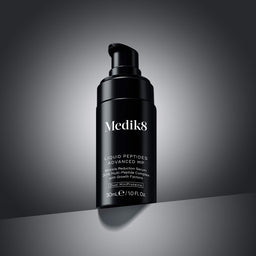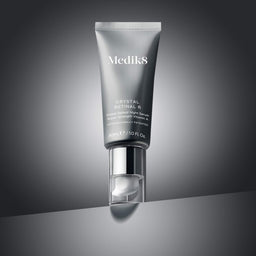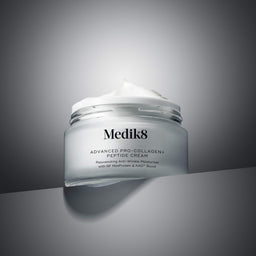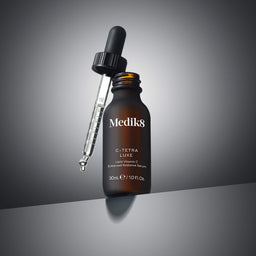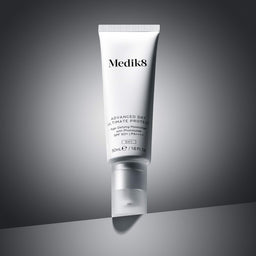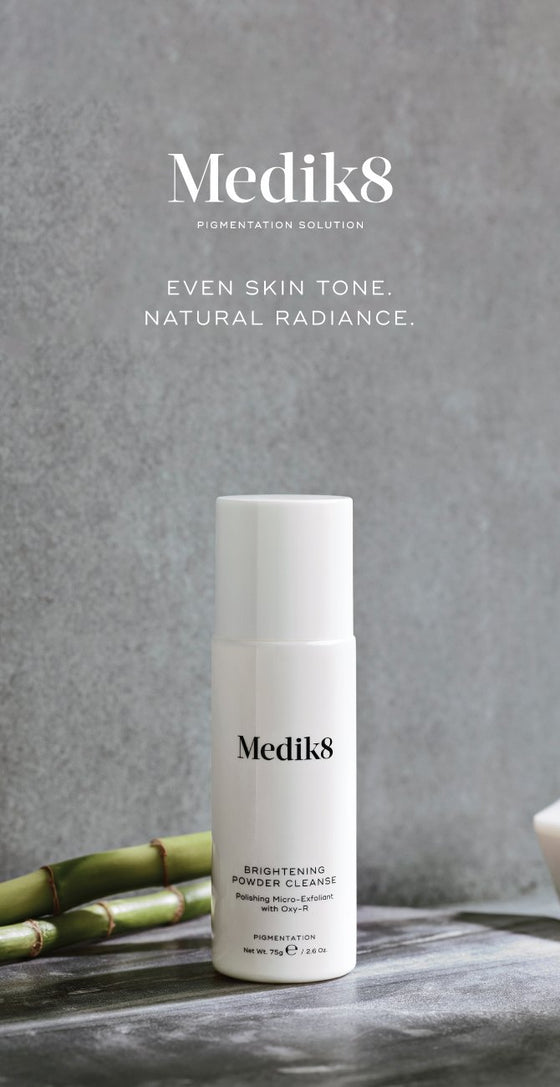Ursache und Prävention
Wussten Sie, dass fahle, verfärbte Haut feine Linien und Falten als Hauptindikator für Hautalterung übertrumpft? Studien haben gezeigt, dass die meisten Menschen einen ungleichmäßigen Teint als wichtigstes Hindernis für jugendlich aussehende Haut nennen.1
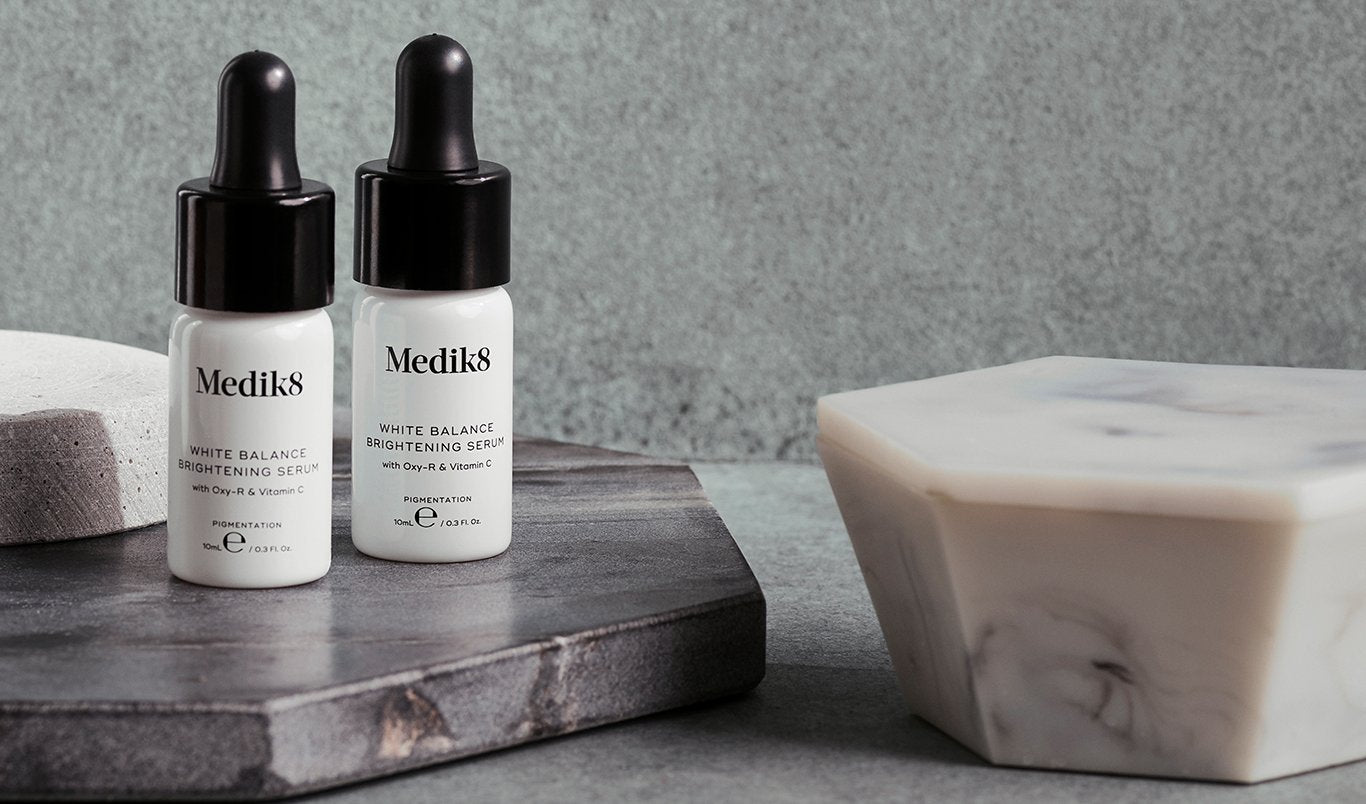
Was verursacht die Pigmentierung?
Hyperpigmentierung kann wie aus dem Nichts auftauchen - an einem Tag sonnen Sie sich, am nächsten plagen Sie Altersflecken in jeder Form und Größe. Doch ganz gleich, ob Sie mit Melasma, Sonnenschäden oder dunklen Flecken, die von Ausbrüchen herrühren, zu kämpfen haben - der Schlüssel zur Vorbeugung von Pigmentunregelmäßigkeiten und zur Wahl einer wirksamen Behandlung liegt im Verständnis der Ursache.
Hyperpigmentierung tritt auf, wenn Melanin - das Pigment, das Haut, Haaren und Augen ihre natürliche Farbe verleiht - in bestimmten Bereichen überproduziert wird. Dadurch entstehen örtlich begrenzte dunkle Flecken oder Flecken auf der Haut. Diese Flecken können von hellbrauner bis schwarzer Farbe sein und variieren oft in Größe und Form. Sommersprossen, Altersflecken und Flecken nach Akne sind Beispiele für Hyperpigmentierung. Sie kann zwar jeden zu jedem Zeitpunkt seines Lebens treffen, tritt aber am häufigsten bei mittleren bis dunklen Hauttypen auf. Das liegt daran, dass dunklere Haut mehr Melanin enthält und daher viel anfälliger für Unregelmäßigkeiten ist.
Es gibt viele verschiedene Formen der Hyperpigmentierung, aber im Wesentlichen lassen sie sich in drei Kategorien einteilen:
1. Hormonell
Wenn der Östrogenspiegel über ein normales Maß hinaus ansteigt, kann dies zu einem Zustand führen, der als Melasma bekannt ist und eine großflächige Verdunkelung der Haut bewirkt. Deshalb bemerken viele Frauen während der Schwangerschaft oder nach der Einnahme der Antibabypille flache, dunkle Hautflecken. Tatsächlich sind so viele schwangere Frauen davon betroffen (bis zu 90 %)2, dass es umgangssprachlich als "die Maske der Schwangerschaft" bezeichnet wird. Die gute Nachricht für Melasma-Betroffene ist, dass sich die Krankheit oft von selbst zurückbildet, sobald sich der Östrogenspiegel wieder normalisiert hat - zum Beispiel nach der Geburt oder nach dem Absetzen hormoneller Verhütungsmittel. Die schlechte Nachricht? Es kann ein paar Monate bis ein paar Jahre dauern, bis es von selbst verschwindet.
2. Entzündung
Die postinflammatorische Hyperpigmentierung (PIH) tritt auf, nachdem ein Pickel oder Biss abgeheilt ist. Sie ist im Wesentlichen die natürliche Reaktion der Haut auf eine Verletzung, die eine Entzündung der Haut verursacht. Wenn die Entzündung abklingt und die Läsion zu heilen beginnt, kann die Haut oft zu viel Melanin produzieren, was dazu führt, dass die zuvor geschädigte Haut dunkler wird. PIH bessert sich im Laufe der Zeit (auch wenn sie unbehandelt bleibt), doch kann dies je nach Schwere der Pigmentierung zwischen drei Monaten und drei Jahren dauern. Generell gilt: Je stärker die Entzündung, desto ausgeprägter ist die PIH.
Für diejenigen, die zu Unreinheiten neigen, ist es wichtig, nicht an der Haut zu zupfen. Selbst wenn eine Extraktion korrekt durchgeführt wird, kann sie die Entzündung eines Pickels noch verstärken und die Wahrscheinlichkeit einer postinflammatorischen Hyperpigmentierung erhöhen.
3. Durch Sonne verursacht
Dies bezieht sich in der Regel auf Altersflecken (oder Leberflecken, wie sie auch genannt werden). Diese Art der Hyperpigmentierung wird durch Sonnenschäden verursacht. Trotz des Namens hat das Alter nichts mit dem Zustand zu tun. Jeder kann zu jedem Zeitpunkt seines Lebens davon betroffen sein. Interessanterweise treten Altersflecken nicht unbedingt zum gleichen Zeitpunkt auf, zu dem die Haut befallen wird. Oft treten Sonnenschäden, die in den 20er Jahren entstanden sind, erst in den 30er oder 40er Jahren auf, weshalb es unerlässlich ist, schon in jungen Jahren täglich Sonnenschutzmittel zu verwenden. Auch andere Faktoren wie Umweltverschmutzung und blaues Licht von elektronischen Bildschirmen können zu einer verstärkten Hyperpigmentierung führen.
Alle Fälle von Hyperpigmentierung werden durch Sonneneinstrahlung verschlimmert, daher ist ein angemessener Sonnenschutz ein absolutes Muss.
Prävention
Medik8 bietet eine umfassende Lösung zur Behandlung der verschiedenen Arten von Pigmentierung. Mit der patentierten Oxyresveratrol-Technologie geht die Lösung Hyperpigmentierung aus mehreren Blickwinkeln an und fördert einen gleichmäßigen, strahlenden Teint. Das Brightening Serum geht in 7 Schritten gegen Hyperpigmentierung vor und kombiniert den ultimativen Aufheller Oxyresveratrol mit exfolierenden Polyhydroxysäuren. Erfahren Sie mehr über die 7 Schritte zur Aufhellung.
Erfahren Sie mehrBei Medik8 bieten wir eine professionelle Behandlung in der Klinik namens Even Professional Skin Peel an, die speziell für fahle, hyperpigmentierte Haut entwickelt wurde. Mit fortschrittlichen Peelingsäuren werden abgestorbene, verfärbte Hautpartien abgetragen und gleichzeitig depigmentierende Wirkstoffe in die Tiefe abgegeben, um Hyperpigmentierung zu bekämpfen. Finden Sie einen Salon in Ihrer Nähe, um diese Behandlung auszuprobieren.
Finden Sie mein örtliches Hautpflegezentrum2 J.L. Schmutz, Presse Medicale, 2003, 32(38), S. 1806-8
